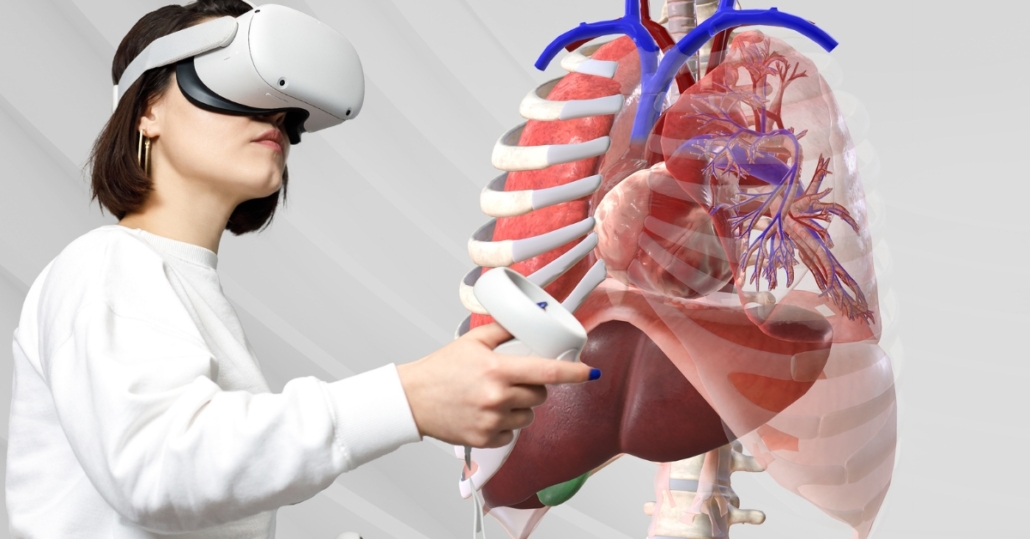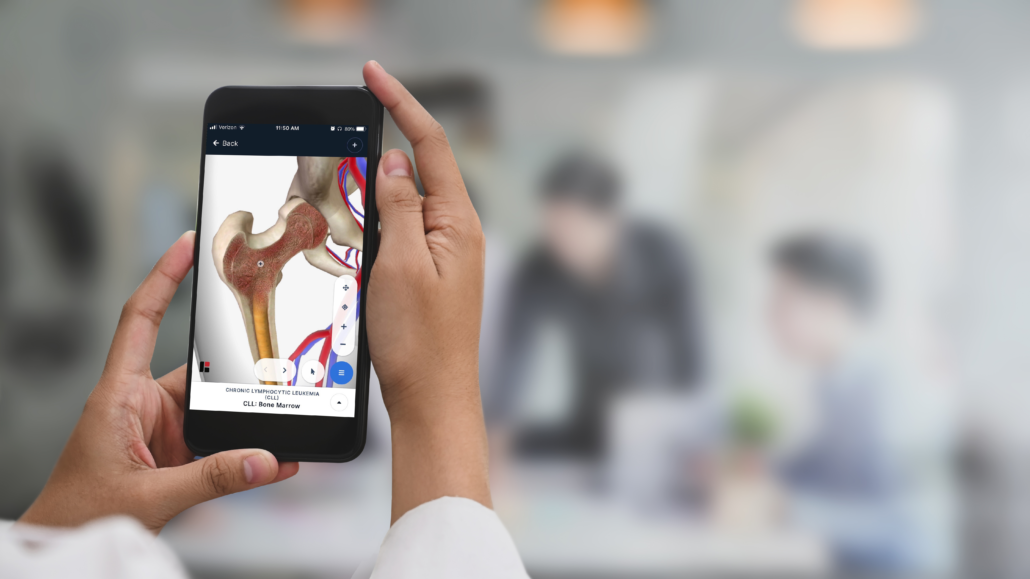Augmented and virtual reality are helping shape the future of medical education
By Vikram Savkar
The field of medical education is constantly adapting in the face of new challenges, new technologies, and evolving consumer tastes. Today, these factors are converging to make virtual reality and augmented reality (VR/AR) training a present-day reality in medical education, something that would have seemed unlikely even a few years ago.
The pandemic, certainly, gave a strong boost to the receptiveness of medical schools to adopt digital training solutions, with students unable to participate in sessions such as hands-on dissection, a core activity in medical training. As a result, there was a sudden uptake in the spring and fall of 2020 by medical schools of digital anatomy solutions, which students could access from home or the safety of their dorm rooms. These digital anatomy solutions, which combine sophisticated modeling technology derived from the gaming industry with high-fidelity anatomical drawings prepared by trained specialists, were not only an adequate stopgap solution to shuttered gross anatomy labs but were, in some ways, even more powerful. At their best, these tools gave students a chance to interactively explore a diversity of body types, building deep familiarity with human anatomy.
VR/AR become medical school mainstays
Digital anatomy tools continued to play a larger role in medical schools over the duration of the pandemic, and by the 2022/2023 academic year, when “pandemic protocols” in most schools were suspended, they remained in heavy use. This new widespread comfort with digital tools, supplementing or occasionally replacing the traditional real-world equivalents, ultimately laid the groundwork for the rise of VR/AR solutions.
Because the underlying VR/AR technologies have advanced so quickly in the past few years, partly because of major companies like Meta mainstreaming the idea of VR/AR product investment, by the late stages of the pandemic there was an upsurge in VR/AR-based medical training tools on the market that provided stunning and credible learning experiences for medical students. When used in the appropriate settings, these tools trained students on how to perform actual surgeries – including with “haptics”, or a sense of the actual “feel” of making an incision – or gave them a real-world experience of treating a range of realistic digital patients. While at first there was some hesitancy on the part of faculty, now in 2023 we are starting to see rapid (though still initial) adoption of these tools in medical education in widespread parts of the world.
The new way of safely learning medical essentials
From the perspective of institutions, there are two reasons for this openness to using solutions that would have been dismissed out of hand just a few years ago.
First, as a study [1] published in Simulation in Healthcare outlined, VR simulation practices can serve as a supplementary tool to address the issues of limited time and resources in medical schools by allowing students to repetitively practice various skills without unwanted consequences. It goes without saying that residents cannot practice a difficult surgery repeatedly on real patients; but they can on VR simulated patients. Residents can improve skills and coordination, track their proficiencies, and improve decision-making especially when under the pressure of critical events, all without concern for doing harm to real patients. Medical students can practice consults with agitated patients or patients with challenging social determinants again and again, until they develop relationship-building skills that are as strong as their medical knowledge. An article [2] from Studies in Health Technology and Informatics has shown that medical students demonstrate significantly higher knowledge gain when using an immersive environment rather than screen-based learning. In a market with trained clinicians in short supply, VR/AR tools are a powerful mechanism for potentially accelerating the speed to practice-readiness.
Second, VR/AR tools are certain to become a larger part of the field of medical practice itself, though we are still just in the earliest stages of this development. Research and Markets projects [3] that the VR and AR market in healthcare could see a 22.5% compound annual growth rate from 2023 to 2027.
The exact use cases for how VR/AR will become part of daily healthcare practice are still being determined, but one likely use case is patient education. Utrecht University Medical Centre in the Netherlands noted that VR interventions showed a significant reduction in anxiety for some patients, and patients found VR education useful overall as it heightened understanding, improved communication with healthcare professionals, and encouraged following treatment guidelines. Incorporating VR/AR into medical education will help prepare clinicians to use these tools in practice.
The future of medical education will differ from the traditional approach in many ways, but we can expect that widespread integration of immersive technology will be a substantial one. While these technologies will continue to evolve and improve, it is already clear that medical education can benefit from their potential to enhance learning outcomes, improve patient care, and transform medical practice.
About the author
Vikram Savkar is the Senior Vice President and General Manager for the Medicine Segment at Wolters Kluwer. In his role, Savkar leads product innovation to advance the digital evolution of information and productivity solutions for medical researchers, clinicians, medical students, and faculty to inform evidencebased decisions on care and outcomes. He has been with Wolters Kluwer for ten years, serving as General Manager for several businesses in the Legal & Regulatory division before joining the health division.
Vikram Savkar




